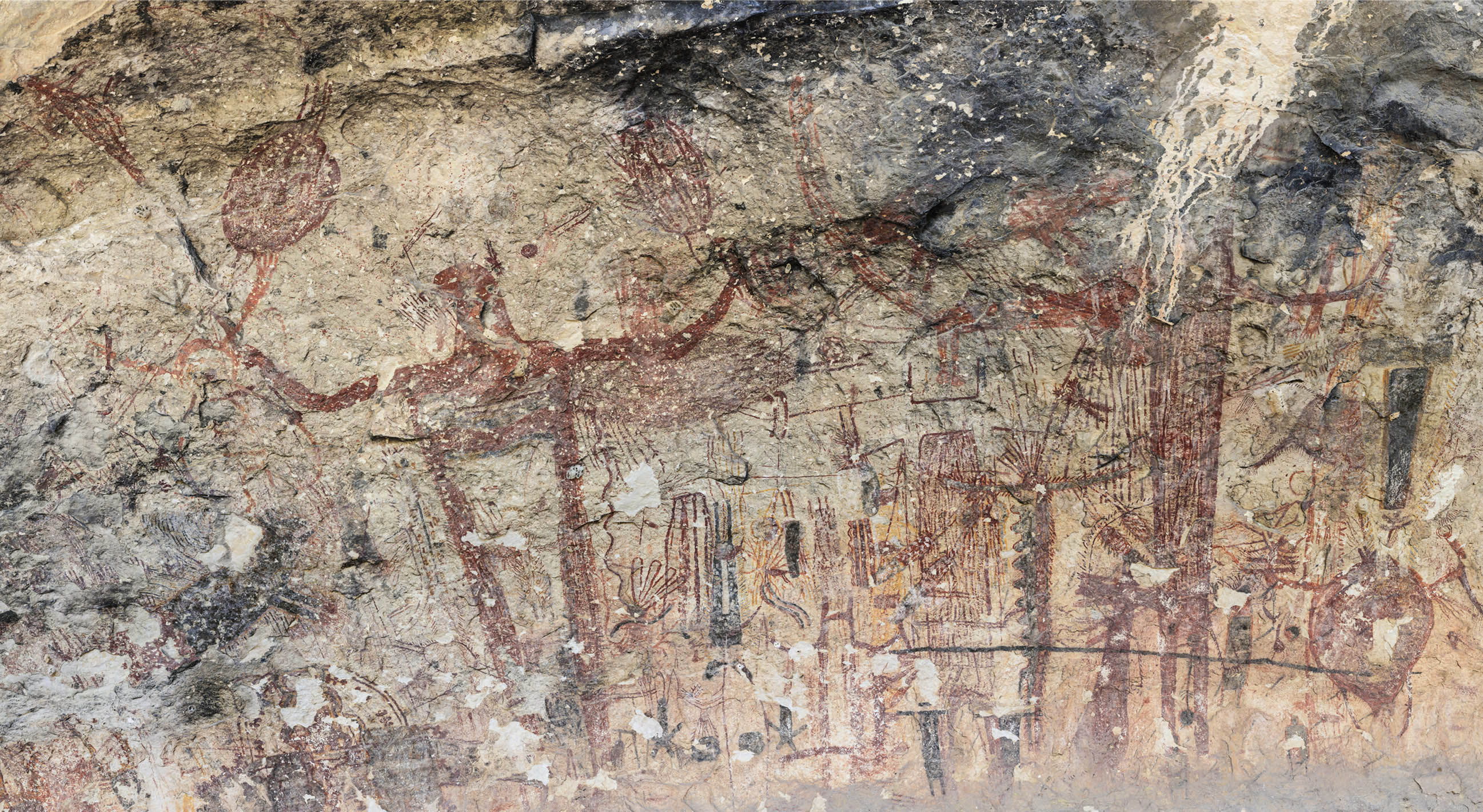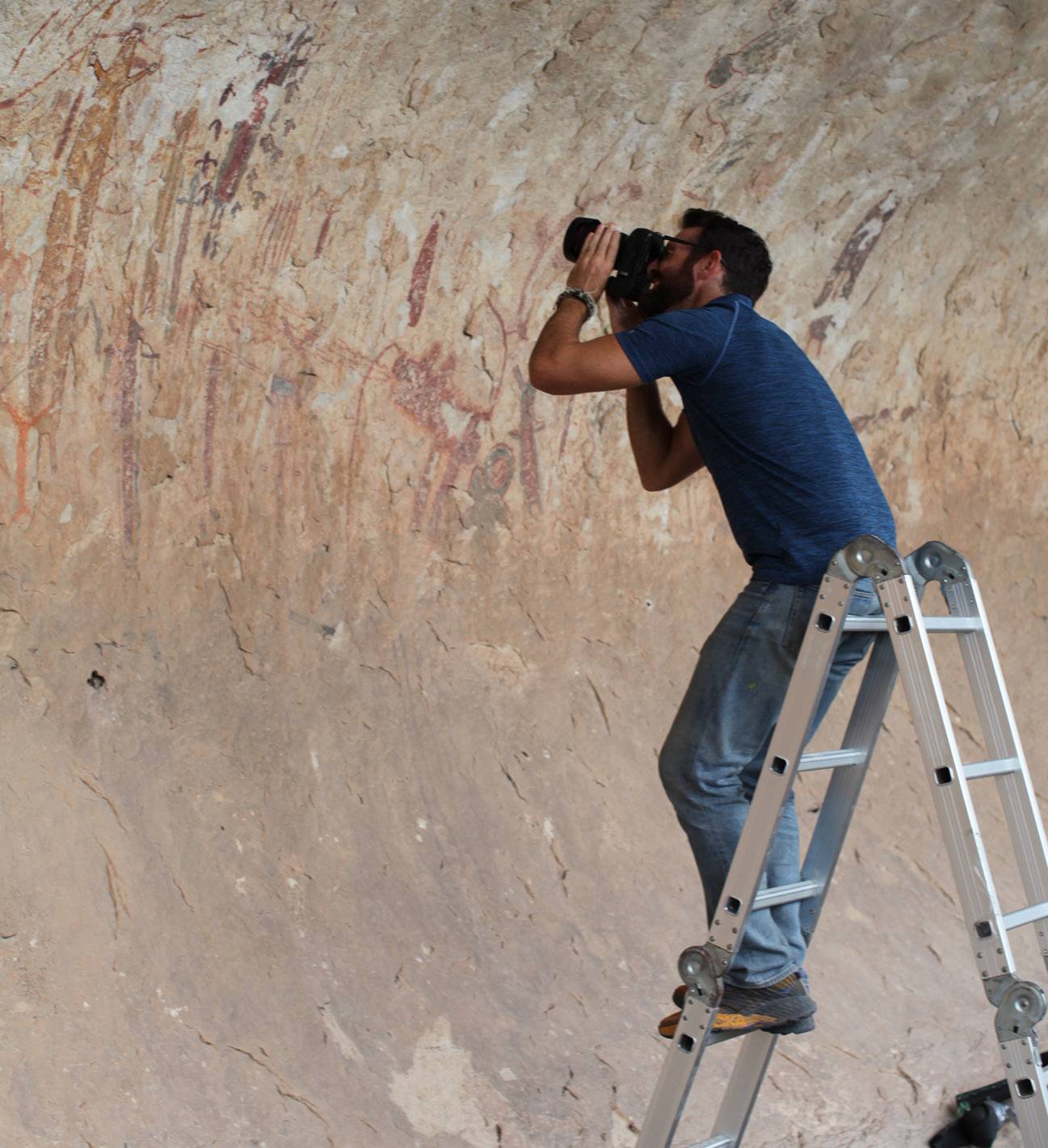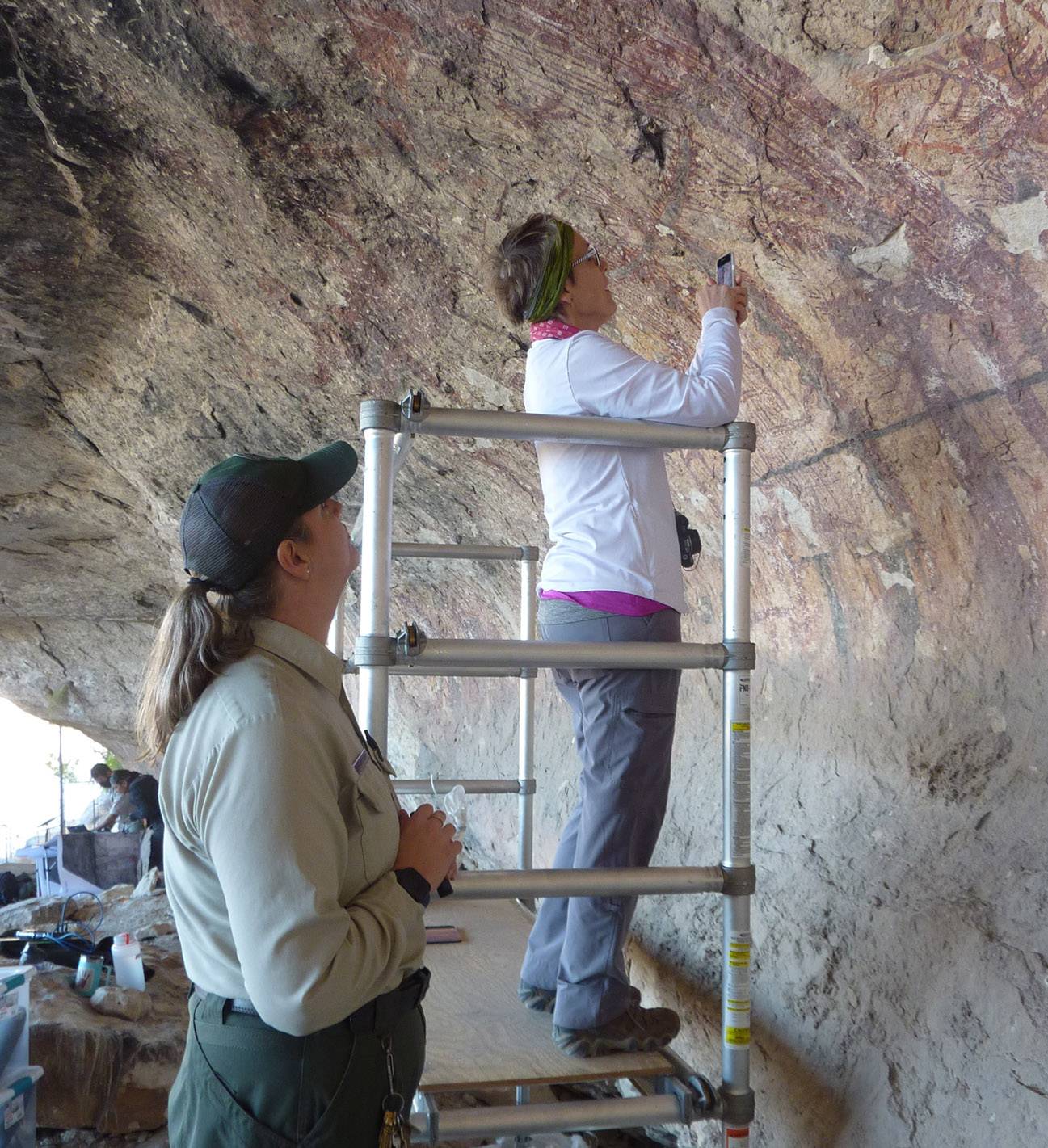An Ancient Account
Innovative archaeological research explores the craft and meaning of the oldest known rock art in the Americas
By Matt Joyce

In the borderlands of Southwest Texas, the Rio Grande converges with the Pecos and Devils rivers to create an array of deep canyons and rocky ravines that slice across the arid landscape.
The flowing waters that carved the Lower Pecos Canyonlands, as the region is known, have drawn humans for millennia. Within the canyons, rock shelters harbor archaeological evidence of hunter-gatherer inhabitants going back 13,000 years. These nomadic groups painted artworks on the limestone canyon walls, depicting human and animal figures surrounded by symbols that hint at a panoply of mythic beliefs.

Now, research led by Texas State University archaeologist Dr. Carolyn Boyd is offering new insight into when, how, and why ancient people created the murals, some of which span more than 100 feet. With Dr. Karen Steelman, science director at the nonprofit Shumla Archaeological & Education Research Center in Comstock, and Dr. Phil Dering, adjunct professor in the TXST Anthropology Department, the research team radiocarbon dated the paint to determine the murals were created 5,500 years ago. That’s 1,500 years earlier than previously thought, and it makes the “Pecos River Style” the oldest securely dated rock art in the Americas.
The researchers, including TXST graduate students, also used digital microscopy to figure out the sequence in which the ancient artists applied paint layers to the cave walls. Their analysis proves the murals were well-planned and created during single episodes.
“For decades people assumed that the paintings were a random collection of images painted across millennia,” Boyd says. “Our findings completely change previous perceptions about hunter-gatherers, about their complexity, and about how they utilized labor. They didn’t have monumental architecture, but they had monumental art.”
Archaeologists have puzzled over the region’s rock art since the 1930s. Scholarly study picked up in the late 1990s when Boyd, a muralist herself, founded the nonprofit Shumla center to advance rock art research and education. Their work to document the murals is a race against time: The panels are fading over the centuries due to natural accretion of the limestone walls and the effects of weather. The impoundment of Lake Amistad in 1960 submerged an unknown number of rock art sites.

A National Science Foundation grant of $196,000 and a National Endowment for the Humanities grant of $145,000 helped fund various aspects of the research over the past two years.
Along with determining the stratigraphy of the murals’ paint layers, the researchers digitally stitched together hundreds of high-resolution photos to create gigapanoramas of the imagery. Meanwhile, Steelman, a chemist, took tiny chips of the paint and used a plasma oxidation instrument she built in Shumla’s Comstock lab to extract the carbon dioxide of the organic material in the paint for radiocarbon dating. Steelman also dated the mineral accretions above and below the paint layers to confirm the date ranges.
Using high-res images and stratigraphy data, Boyd recreated bright printouts of some of the murals. She and Dering took the posters to the Sierra Madre Mountains in Mexico to show them to the shamans of the isolated Huichol indigenous tribe, people who’d never before seen the Texas rock art.
“We just laid it out and asked, ‘What do you see?’ with no prompting,” Boyd recalls. “And without hesitation, they said, ‘This was before the sun was born, and this central figure is Kauyumari, and this is the path that leads to the center point of origin where all of creation will emerge.”
Boyd says the shamans’ feedback opened new insights into the art and confirmed much of the analysis she’s been working on, including for her 2016 book, The White Shaman Mural: An Enduring Creation Narrative in the Rock Art of the Lower Pecos.
“For decades scholars have noticed similarities among Mesoamerican religions and speculated that these patterns reflect an ancient core of beliefs that originated deep in the past and endured into the present,” Boyd says. “These murals are the oldest visual remnant of that ancient core.” ★